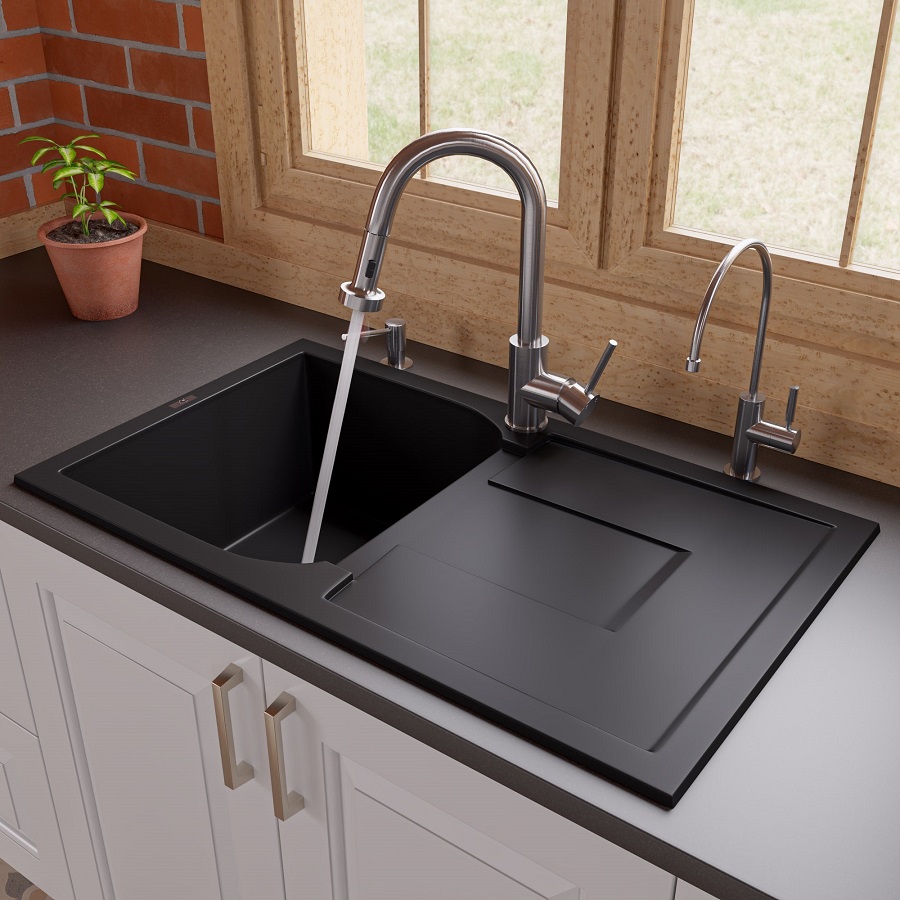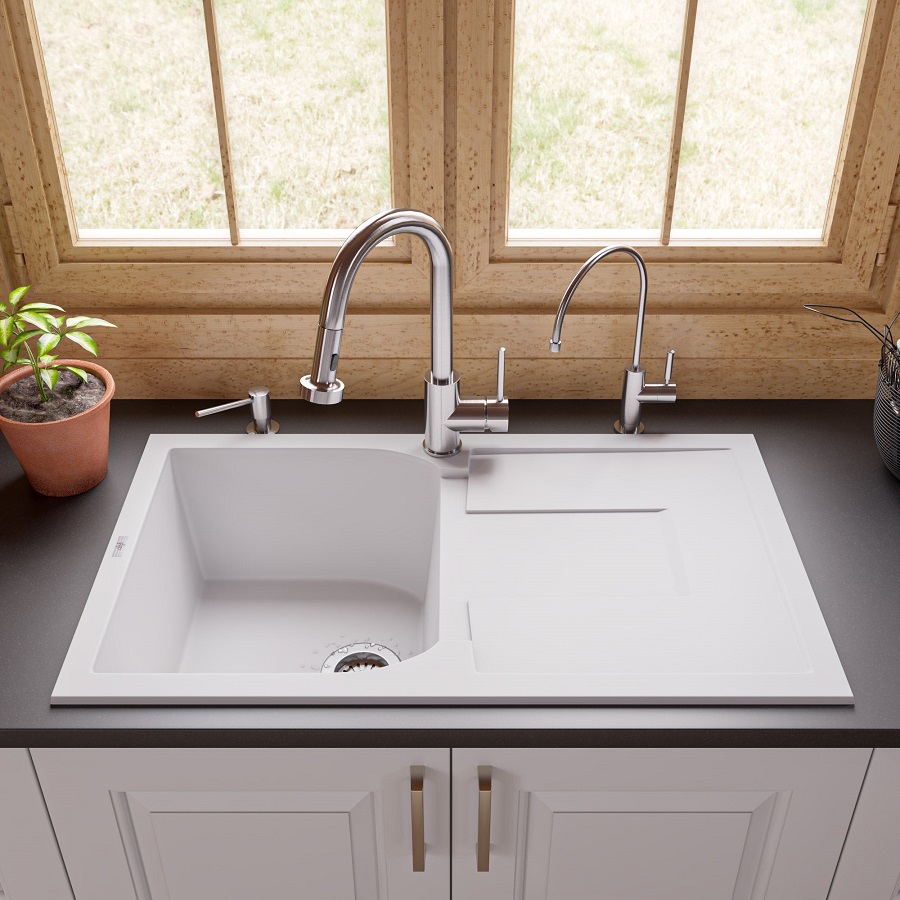Introduction
How to fix kitchen sink – The kitchen sink is an integral part of any home, serving as the focal point for dishwashing, food preparation, and often even as a gathering spot for family and friends. However, like any appliance or fixture, the kitchen sink can experience problems ranging from minor inconveniences to significant plumbing emergencies. In this comprehensive guide, we will explore the most common kitchen sink issues, their causes, and step-by-step solutions to troubleshoot and repair each problem.
 Table of Contents
Table of Contents
- Identifying Common Kitchen Sink Problems
- 1.1. Leaks
- 1.2. Clogs
- 1.3. Slow Draining
- 1.4. Noisy Faucets
- 1.5. Undesirable Odors
- Tools and Materials Needed
- 2.1. Basic Tools for Sink Repairs
- 2.2. Plumbing Supplies and Materials
- Troubleshooting and Repairing Kitchen Sink Issues
- 3.1. Fixing Leaks
- 3.2. Addressing Clogs
- 3.3. Improving Drainage Speed
- 3.4. Silencing Noisy Faucets
- 3.5. Eliminating Odors
- Preventative Measures for Kitchen Sink Maintenance
- When to Call a Professional
- Conclusion
Identifying Common Kitchen Sink Problems
Identifying the issue with your kitchen sink is the first step toward finding a solution. Here are the most common problems and their signs:
Leaks
- Signs: Water pooling under the sink, damp cabinets, water stains on the ceiling below (if applicable), or an increase in your water bill.
- Causes: Loose connections, worn-out washers, damaged gaskets, or cracks in the sink itself.
Clogs
- Signs: Water backing up in the sink, slow drainage, gurgling sounds, or foul smells emanating from the drain.
- Causes: Accumulated debris, grease buildup, foreign objects lodged in the pipes, or tree roots, in more severe cases.
Slow Draining
- Signs: Water takes longer than normal to drain after use.
- Causes: Partial blockages, buildup of soap scum and grease, or improper installation of the drain.
Noisy Faucets
- Signs: Whistling, banging, or sputtering sounds when turning on the faucet.
- Causes: Air in the pipes, high water pressure, or worn-out washers or cartridges.
Undesirable Odors
- Signs: Foul smells coming from the sink or drain area.
- Causes: Food particles trapped in the drain, buildup of grease, or sewer line issues.
Tools and Materials Needed
Before diving into repairs, ensure you have the appropriate tools and materials on hand.
Basic Tools for Sink Repairs
- Adjustable wrench
- Screwdriver (flathead and Phillips)
- Plumber’s tape
- Plunger
- Bucket
- Cleaning brush
- Flashlight
Plumbing Supplies and Materials
- Replacement washers and gaskets
- Drain cleaner or enzyme-based clog remover
- Pipe cleaner
- Silicone sealant
- Plumber’s putty
Troubleshooting and Repairing Kitchen Sink Issues
Fixing Leaks
- Identify Leak Source: Check the faucet, supply lines, and under-sink plumbing. Use a flashlight for better visibility.
- Turn Off Water Supply: Locate the shut-off valves under the sink and turn them clockwise to stop the water flow.
- Tighten Connections: If the leak is at a joint, use an adjustable wrench to gently tighten connections. Be careful not to overtighten, which may cause damage.
- Replace Washers or Gaskets: If the leak persists, disassemble the faucet or drain components to inspect washers and gaskets for wear. Replace as needed.
- Apply Plumber’s Putty: For cracks in the sink or drain fittings, clean the area and apply plumber’s putty or silicone sealant to create a waterproof barrier.
Addressing Clogs
- Use a Plunger: Start with a plunger. Fill the sink with a small amount of water, create a seal around the drain, and plunge vigorously.
- Check the P-Trap: Place a bucket under the sink, disconnect the P-trap (the curved pipe beneath the sink), and inspect for debris. Clean it out if clogged.
- Try Drain Cleaners: For stubborn clogs, consider using an enzyme-based drain cleaner. Follow the manufacturer’s instructions carefully.
- Use a Drain Snake: If clogs persist, a plumber’s snake can be inserted into the drain to break up and remove blockages.
Improving Drainage Speed
- Clean the Drain: Plug the sink and fill it with hot water, then remove the plug to flush out any soap scum or grease. Repeat this step occasionally to prevent buildup.
- Use Baking Soda and Vinegar: Pour half a cup of baking soda followed by half a cup of vinegar down the drain. Let it sit for 30 minutes, then rinse with hot water.
- Check for Kinks in Hoses: Ensure that any flexible drainage hoses are not kinked or blocked, which may hinder flow.
Silencing Noisy Faucets
- Check Water Pressure: Use a pressure gauge to check if your home’s water pressure is higher than normal (above 80 psi). You may need to install a pressure regulator.
- Inspect Washers and Cartridges: Remove the faucet handle and inspect washers and cartridges for wear. Replace if necessary for smoother operation.
- Flush the System: If air in the pipes is suspected, turn on all faucets at the highest point in your home to release trapped air. Leave them running until the sputtering stops.
Eliminating Odors
- Clean the Disposal: If you have a garbage disposal, turn it on and run cold water while adding ice and citrus peels to clean and refresh the blades.
- Regular Drain Cleaning: Periodically clean the drain with a mixture of baking soda and water to keep odors at bay.
- Check for Trapped Food: Inspect the sink for any food residues trapped in the drain or disposal. Remove and clean as necessary.
Preventative Measures for Kitchen Sink Maintenance
- Be Mindful of What Goes Down the Drain: Avoid pouring grease, coffee grounds, and large food particles down the disposal.
- Regular Cleaning: Clean the sink, faucet, and disposal regularly to prevent buildup.
- Inspect Connections: Periodically check for loose connections or signs of wear and address them promptly.
- Install a Drain Strainer: A strainer can catch debris before it goes down the drain and cause clogs.
When to Call a Professional
While many kitchen sink issues can be handled as DIY projects, there are circumstances under which you should consult a professional plumber:
- Severe Water Leaks: If you notice substantial leaks or water damage, it’s best to get a professional’s help.
- Persistent Clogs: Multiple attempts to clear a clog have failed, indicating a possible deeper plumbing issue.
- Complex Repairs: If you’re unsure of the repair process or lack the right tools for a more complicated task, professional assistance is recommended.
Understanding the Anatomy of Your Sink
Before diving into repairs, familiarize yourself with the different components of your kitchen sink:
- Basin: The main area for washing dishes.
- Faucet: The water outlet that comes with various configurations (single, double, pull-down).
- Draining System: Comprises the drain, the trap (P-trap), and waste pipes.
- Garbage Disposal (if applicable): A device that grinds food waste.
Knowing these parts can help you better understand where potential problems may arise.
Fixing a Leaky Sink
Identifying the Leak Source
Leaks can occur from various parts of your kitchen sink, including the drain assembly and beneath the sink where pipes connect.
Steps to Repair
- Clean the Area: Wipe the surface beneath the sink to observe the leak’s source more clearly.
- Tighten Connections: Often, the source of a leak can be attributed to loose connections. Use a wrench to tighten the nuts and fittings on the water supply lines and drain assembly.
- Replace the Gaskets or Seals: If tightening does not solve the issue, you may need to replace gaskets or rubber seals, which can wear over time.
- Seal Cracks or Holes: For cracks in the sink itself, consider using plumber’s putty or silicone sealant as a temporary fix.
- Reassemble and Test: Ensure all parts are centered and properly aligned before turning the water back on to test for leaks.
Prevention Tips
Regular inspections of seals and connections can help you catch any potential leaks early, preventing more extensive damage.
Conclusion
Experiencing issues with your kitchen sink can be inconvenient, but with the right knowledge and tools, many problems can be resolved easily and cost-effectively. Regular maintenance can prevent many of these common issues from occurring, ensuring your kitchen sink remains a reliable part of your home. By following the steps outlined in this guide, you can handle almost any kitchen sink problem with confidence. However, always know your limits and don’t hesitate to call a professional when necessary. After all, maintaining your kitchen sink can save you time, money, and stress in the long run. Enjoy your kitchen and happy fixing!



